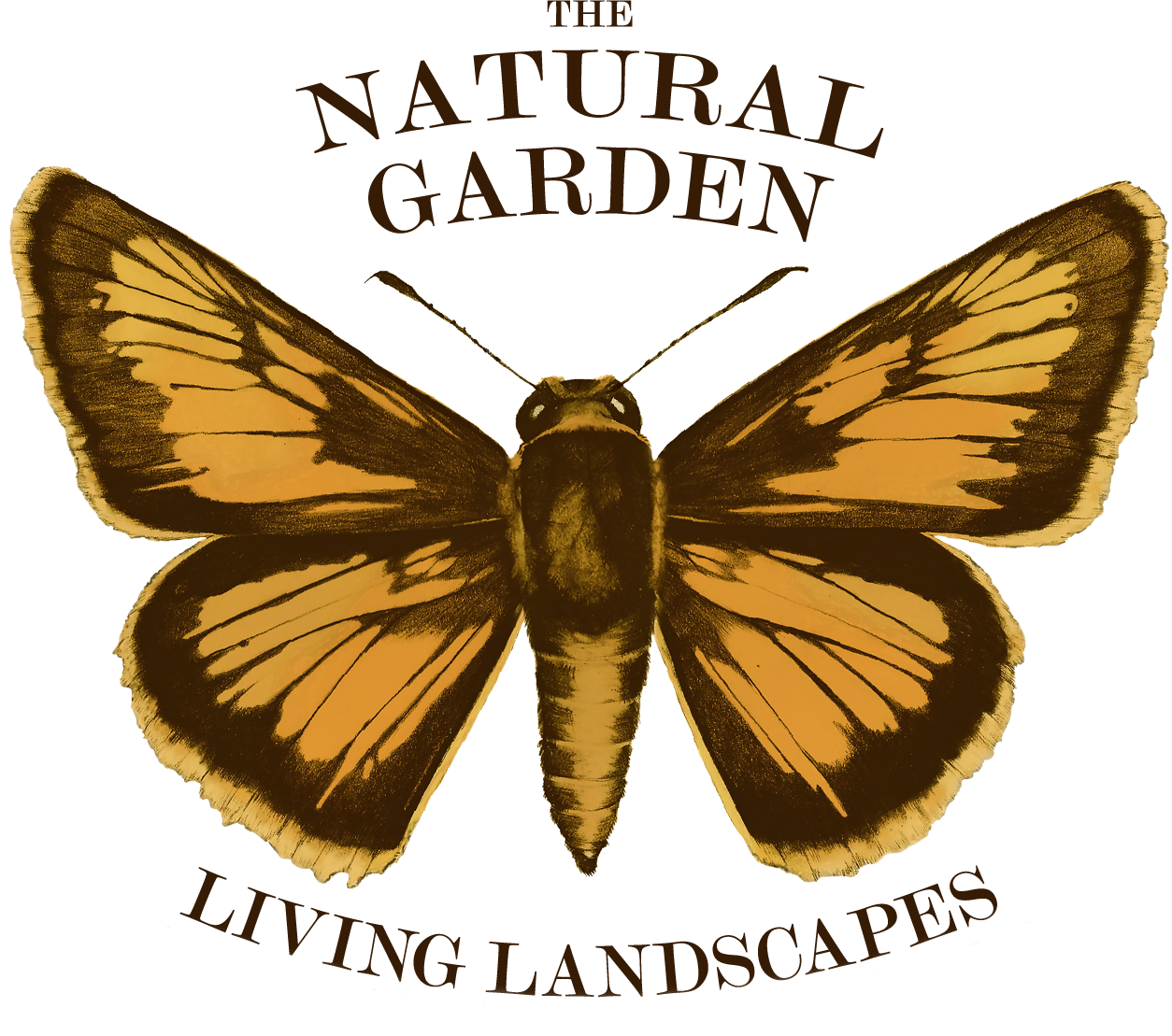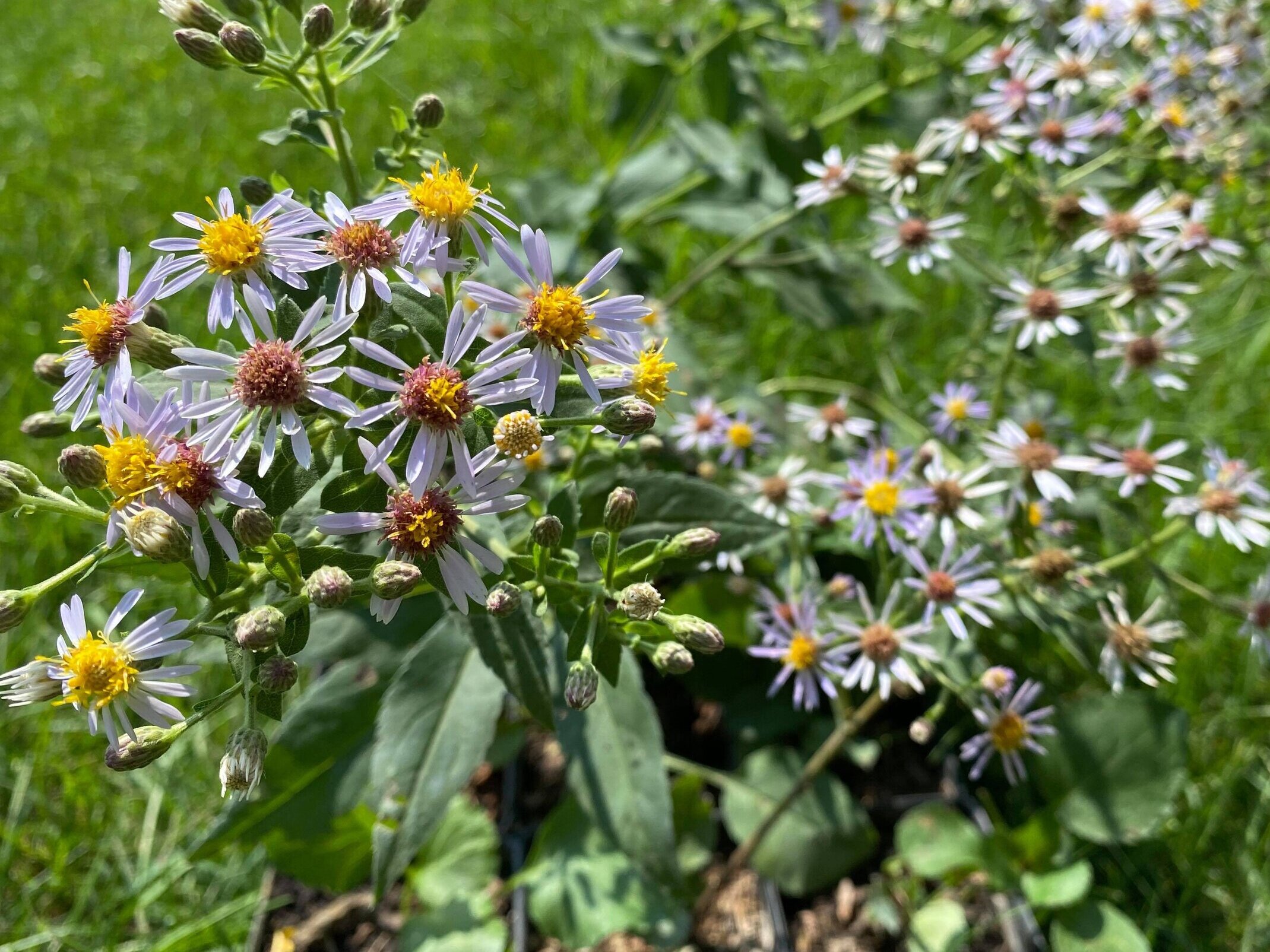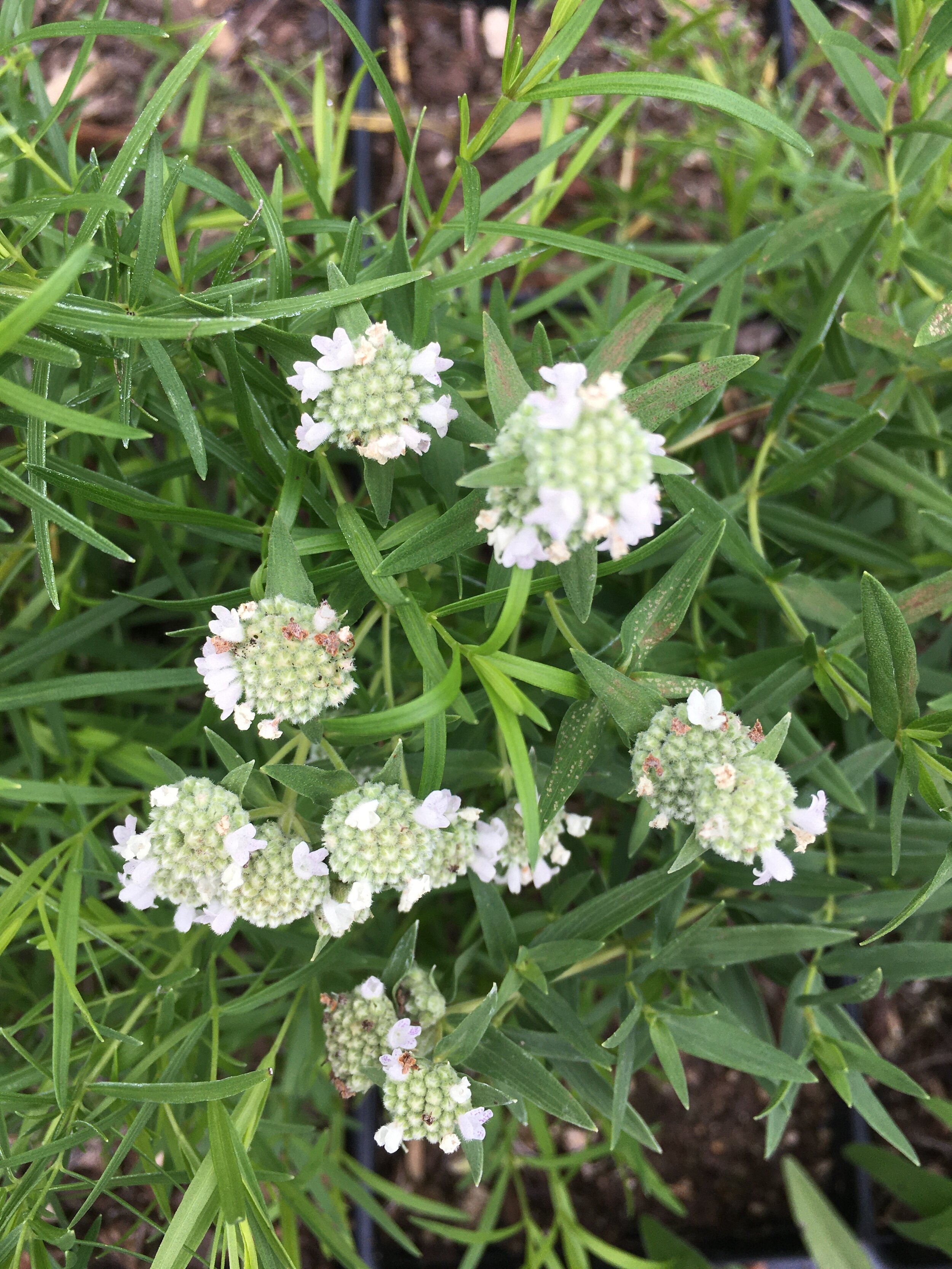 Image 1 of
Image 1 of


Monarda fistulosa (Wild Bergamot)
grows 3-5 ft. tall
full sun
dry to medium loamy soils
when planted in wet areas, the leaves may develop a white mildew; this does not kill the plant, but we recommend allowing good air circulation around this species
lavender blooms June-July
benefits bumbles, solitary bees, specialist bees, butterflies/moths, wasps, beetles and hummingbirds
natural habitat: mesic to dry upland forests, rocky woodlands, clearings, old fields, forest edges, meadows, roadsides. Usually on base-rich soils.
associated insects: black sweat bee (specialist), mason wasp, great black wasp, bee flies, soldier beetles, banded long-horn beetle, Eastern Tiger Swallowtail Butterfly, Silver Spotted Skipper Butterfly, Monarch butterfly, great spangled fritillary butterfly, moths, snout moths, hummingbird clearwing moths, bumble bees, long-horned bees, cuckoo bees, green sweat bees, wool carder bees, small resin bees, leafcutter bees,
larval host plant for Hermit Sphinx Moth (Lintneria eremitus), Snout Moths (Pyrausta generosa, P. signatalis)
use fresh or dried leaves and flowers for tea; steep 10 min.
good companion plants: Black-eyed Susan, wild petunia, butterfly milkweed
grows 3-5 ft. tall
full sun
dry to medium loamy soils
when planted in wet areas, the leaves may develop a white mildew; this does not kill the plant, but we recommend allowing good air circulation around this species
lavender blooms June-July
benefits bumbles, solitary bees, specialist bees, butterflies/moths, wasps, beetles and hummingbirds
natural habitat: mesic to dry upland forests, rocky woodlands, clearings, old fields, forest edges, meadows, roadsides. Usually on base-rich soils.
associated insects: black sweat bee (specialist), mason wasp, great black wasp, bee flies, soldier beetles, banded long-horn beetle, Eastern Tiger Swallowtail Butterfly, Silver Spotted Skipper Butterfly, Monarch butterfly, great spangled fritillary butterfly, moths, snout moths, hummingbird clearwing moths, bumble bees, long-horned bees, cuckoo bees, green sweat bees, wool carder bees, small resin bees, leafcutter bees,
larval host plant for Hermit Sphinx Moth (Lintneria eremitus), Snout Moths (Pyrausta generosa, P. signatalis)
use fresh or dried leaves and flowers for tea; steep 10 min.
good companion plants: Black-eyed Susan, wild petunia, butterfly milkweed
grows 3-5 ft. tall
full sun
dry to medium loamy soils
when planted in wet areas, the leaves may develop a white mildew; this does not kill the plant, but we recommend allowing good air circulation around this species
lavender blooms June-July
benefits bumbles, solitary bees, specialist bees, butterflies/moths, wasps, beetles and hummingbirds
natural habitat: mesic to dry upland forests, rocky woodlands, clearings, old fields, forest edges, meadows, roadsides. Usually on base-rich soils.
associated insects: black sweat bee (specialist), mason wasp, great black wasp, bee flies, soldier beetles, banded long-horn beetle, Eastern Tiger Swallowtail Butterfly, Silver Spotted Skipper Butterfly, Monarch butterfly, great spangled fritillary butterfly, moths, snout moths, hummingbird clearwing moths, bumble bees, long-horned bees, cuckoo bees, green sweat bees, wool carder bees, small resin bees, leafcutter bees,
larval host plant for Hermit Sphinx Moth (Lintneria eremitus), Snout Moths (Pyrausta generosa, P. signatalis)
use fresh or dried leaves and flowers for tea; steep 10 min.
good companion plants: Black-eyed Susan, wild petunia, butterfly milkweed





